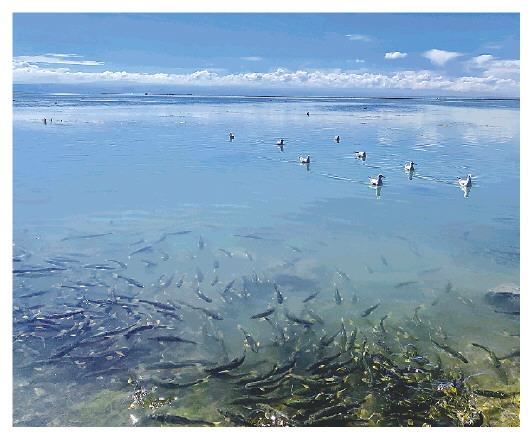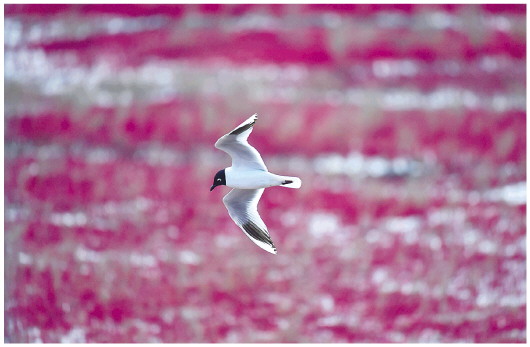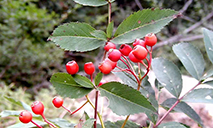NW China’s Qinghai welcomes larger numbers of migratory birds thanks to consistent conservation efforts

Photo taken on September 11, 2019, shows waterfowl and naked carp swimming in Qinghai Lake in northwest China’s Qinghai Province. (Xinhua/Li Linhai)
Over the past many years, northwest China’s Qinghai Province has doubled its efforts to protect migratory birds, which has attracted an increasing number of these feathered friends to the area.
Wang Jianting, head of the Bird Watching Association of Qinghai National Park, has spotted over 400 bird species in the province since 2003, more than half of which were migratory birds.
Wang recently captured photos of a pair of black storks hatching eggs in shifts in Ping’an district, Haidong city, Qinghai. According to Wang, the pair of black storks has hatched eggs there several years in a row.
Black storks are an endangered migratory bird species under first-class state protection in China. These birds visit Qinghai every year in mid-March to reproduce and thereafter migrate to the south between late September and early October.
According to statistics, Qinghai is home to 432 species of wild birds, including 26 species under first-class state protection, such as black storks, golden eagles, black-necked cranes, and Chinese mergansers, as well as 81 species under second-class state protection.
“An increasing number of migratory birds have settled in Qinghai in recent years, thanks to continuous improvements in the province’s ecological environment and the establishment of national parks like the Sanjiangyuan National Park and the Qilian Mountain National Park,” said Zhang Yu, head of the wildlife conservation division of the forestry and grassland administration of the province
Recently, a white-cheeked starling was spotted at the Qinghai Lake National Nature Reserve in the province, bringing the total number of bird species in Qinghai Lake to 228.
Established in 1984, the province’s Longbao National Nature Reserve in Sanjiangyuan, which is home to the headwaters of the Yangtze, Yellow and Lancang rivers, boasts five kinds of birds under first-class state protection such as black-necked cranes and golden eagles.
Pasang Tsering, head of the administration station at the nature reserve, has witnessed the digital transformation of the nature reserve over the past decade. At present, the nature reserve has built a video monitoring platform for the real-time monitoring of waterfowl and has implemented a system of wetland rangers. Besides, it has set up environment-related science popularization and education facilities, such as a bird rescue room, a bird-watching room, and a waterfowl monitoring center, in order to raise public awareness of the importance of environmental protection.
Photos
 China’s central bank to issue commemorative coins on cultural theme of auspiciousness, including two heart-shaped coins
China’s central bank to issue commemorative coins on cultural theme of auspiciousness, including two heart-shaped coins Population of endangered black-headed gulls exceeds 10,000 mark in NE China’s coastal city of Panjin
Population of endangered black-headed gulls exceeds 10,000 mark in NE China’s coastal city of Panjin China's self-developed floating airship breaks record
China's self-developed floating airship breaks record Chinese germplasm bank conserves biodiversity in warm temperate zone
Chinese germplasm bank conserves biodiversity in warm temperate zone
Related Stories
- China's Jiangsu documents 857 new species
- Rare golden cat spotted in SW China’s Tibet for first time
- Over 4,200 endangered cranes spotted at China's largest freshwater lake
- Dujiangyan in Sichuan intensifies efforts to protect wildlife
- More rare birds spotted at east China's Chaohu Lake
- S China's nature reserve conducts bird diversity monitoring
- From vets to common people, collective endeavor toward wildlife protection
- In pics: Water birds flock to pure waters of NW China’s Xinjiang
- Rare bird photographed in Yunnan's nature reserve
- All-woman patrol team protects mountain wildlife
Copyright © 2022 People's Daily Online. All Rights Reserved.






